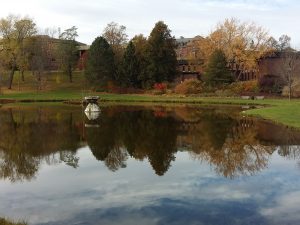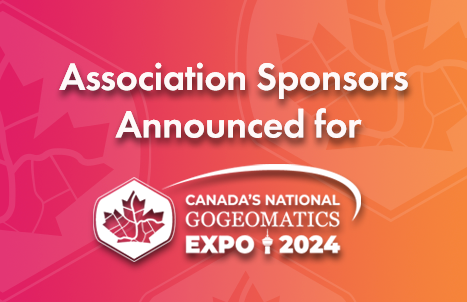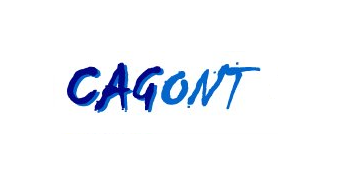Erosion of Geography in Canadian High Schools

Mount Allison University campus
Mount Allison University campus
This weekend, I drove up to Mount Allison University situated in Sackville, New Brunswick, to participate in the Atlantic chapter of the Canadian Association of Geographers’ (CAG) workshop on Geography education. The event provided an update on actions regarding the St John’s Declaration (August 2013).
The workshop was held in the campus chapel basement. It was scheduled 10:15 -11:30 AM on Saturday, November 5th. There were twelve participants: university professors, high school teachers, the CAG executive, a student and myself. While the gathering was small, the content was rich. There was an opportunity to hear updates from the CAG executive, Canadian Geographic Education, GeoAlliance and the Royal Canadian Geographic Society. There were two handouts: one page declaration ‘Advancing Geographic Education for Canadians’ and 2016 International Charter on Geographical Education produced by the IGU Commission on Geographical Education.
The issue under discussion was the decline in the number of students studying Geography in high schools. This, at a time when there is an increased realization of the value of Geographic science and the application of Geomatics technology.
The average GoGeomatics reader is likely a reasonably well-paid young Geomatics professional who wants to see the next generation apply their geographic knowledge and associated technology to current problems. To them the shortage of Geography courses in high school should matter. So does the ‘erosion of Geography’. In a country as large and diverse as Canada, this ‘crisis’ in Geography education is a common concern.
In each provincial and territorial jurisdiction we need a network that brings together students, Geography teachers in schools, technology instructors in community colleges, Geography faculty in universities and curriculum developers in the provincial/territorial Department of Education. We cannot afford silos among them.
What do students, parents and guidance councilors need? They need profiles of high school graduates who have built successful careers based on their Geography education and associated technology. (see below, John Trites work for GANS).
Earlier this Fall, the Royal Canadian Geographic Society (RCGS) announced a new Centre for Geography and Exploration. The Geo-Alliance has been created with a focuson sectors, education and data access.
I believe that Canada needs a voice for people, land, sea and sky and that voice is the voice of Geography (see Carl Sauer’s book Man and Nature). We should use the tools of Geographic science and Geomatics technology to address this ‘erosion of Geography’.
We should arrange for more place-based education (including field work). In Annapolis Valley (Nova Scotia), this could include: canoe trips in the Tobeatic Wilderness Area; bike rides along the Harvest Moon trail from Grand Pre to Annapolis Royal; car excursions along the Highway #101 to observe the changes in agricultural land use; boat trips on the Bay of Fundy foe whale watching.
Geography graduates need to communicate their observations, use GIS to produce an online digital atlas depicting agricultural land use change or South Mountain Acadian forest loss . They can produce maps showing flooding at the Muskrat Falls dam in Labrador. They can learn to use UAVs, and GPS for geo-caching or develop mobile apps that help find local food products in the Annapolis Valley. Similar examples can be replicated in every province and territory.
We are losing Geography departments. In 1986, we created the College of Geographic Sciences (COGS) in Lawrencetown. At that time, Geography was taught at University de Moncton, Mount Allison, Saint Marys and Memorial University of Newfoundland in Atlantic Canada,. Today, COGS is only a part of the Annapolis Valley campus – one of thirteen campuses that make up the Nova Scotia Community College (NSCC).
I wish to thank Stuart Semple and Michael Fox of Mount Allison University for organizing the workshop. As well as Dan Shrubsole and Neil Hanlon for providing the CAG Exceutive perspective. I am grateful to John Trites, the other school teachers, educators and student for their examples from the ‘trenches’. As Pam Mood , Mayor of Yarmouth, would say ‘we need all hands on the deck’ if we will stop the decline of Geography.
I suggest focussing on Geography education at the RCGS. The Explorers can look after themselves. The GeoAlliance should commit funding to support the voice of Geography. Collectively, we should be able to demonstrate significant action at the joint CAG/IGU meetings in Quebec, 2018. That means a Geography education network in every province and territory should be developed. The GoGeomatics community should support their Geography teachers (if appropriate), Geography Awareness week and GIS Day on November 16th.
References
Geography Poster Series at http://gans.ca/Geospatial-Careers (John Trites for GANS)
International Charter on Geographical Education at www.igu-cge.org
For an electronic copy of the St John’s Declaration, go to the GoGeomatics post by Chris, posted December 2nd, 2013. Fixing Geography Education in Canada: the First Step.









Erosion from what? I never had a geography class in high school (Alberta, 1980’s).
Fiona:
I appreciate that there are many Geomatics professionals who did not take a Geography course in High School, or perhaps even in University. However many of the complex problems in Canadian society today, require an understanding of both the cultural and physical landscape. These topics are often found under the heading of Geography.
My purpose was simply to comment on the general state of Geography Education..
Bob
@Bob I agree! My point was there wasn’t a Geography course for me to take in high school – no such were offered. The closest was “Social Studies” which was supposed to encompass all social sciences.
Are alarm bells to be rung across the land?
I wonder what studies on the state of geography education in Canada are available through http://www.cangeoeducation.ca/. Perhaps it is time to annually quiz Canadians, especially students, on their knowledge (or lack of knowledge) on geography (local, country, global) and report the results to our education boards. Anyone up for the challenge to create a quiz? (I suggest a closed Facebook group to set this up).
Edward:
I think it would be very helpful to benchmark the state of geographic knowledge, across the country. Both for school aged as well as the general public. We have some excellent online tools to do this type of survey in a creative and ‘geo-graphic’ way.
The larger question is why is the discipline of Geography not holding its own with other subjects, as high school curriculum evolve. Is it too BIG a subject ? Especially in Canada.
The Ontario Association for Geographic and Environmental Education (OAGEE) has it’s 2016 Fall Conference in Port Hope, ON this weekend. I could not agree more with “‘we need all hands on the deck’ if we will stop the decline of Geography.” I have been in contact with the Geographic Alliances in Arizona, Colorado, and California. Unfortunately, they have been fighting this battle for many years. Geographic education and global competence competes with STEM, numeracy, and literacy, which are the priority
Shawn:
I was at COGS today. In terms of Geography profiles, I recommend the following links.
http://bit.ly/GANSCorpSpon
This is the work of John Trites.
Also the Esri Canada ‘Share Your Story’ link which uses their story map software.
esri-marketing.maps.arcgis.com
All hands on deck.
Bob
I agree that there is insufficient attention paid to geography – and not just in high schools. I have argued with people in the Minister of Education’s office that one of the reasons for Ontario’s success in the export market in the 1970s and 1980s was the strength of geographic education that came out of Ontario’s high schools and universities in the 1960s. We learned about the world at large, how man and the environment were linked, and we understood how that all came together in an economic sense. With the growing importance of exports, AND the environment, the time has come to increase geographic education, not diminish it! In our book “Why ‘Where’ Matters” we have tried to explain the value of geographic information in terms that politicians and senior bureaucrats can understand – as well as bright young students. (A testimonial on the back cover comes from former Deputy Prime Minister John Manley.) The book has been used in a number of universities as an introductory text book and as a book prize for those who do well in first year geography courses. I have been told that a number of students who have received the book as a prize have changed their majors in university to geography. (One is now about to do a PhD!) We recently donated 400 copies of the book to Ontario high school teachers – and make a similar offer to other geography teachers elsewhere in Canada – just pay the shipping cost of $20 per book – or the cost of sending boxes of the book to registered teacher organizations. The time has come to explain the value of geography – but in ways that decision makers can understand. And I chose my words carefully. Politicians know the value – they know where people who supported them live. They know which polls to focus on – and which are a lost cause. It is those decision makers who advise the politicians and the senior bureaucrats who must be reached with clear and accurate examples of why “where” matters.
Bob:
We are on the same page.As I mentioned in the blog, it will require ‘all hands on deck’.
That means teachers, academics, consultants, geographers in Government and industry,
plus ‘freelance Geographers’.
It’s great that you are able make your book available to a wider audience.
Regards,
Bob